Easy 3 Steps That Dont Mess the Skin to Get Rid of Sleeping Bags
Nothing can ruin a camping trip quite as quickly as being cold at night. Staying warm in a sleeping bag can be a bit of a tricky endeavor, but having the proper gear and knowing how to use it all is probably the best way to ensure a warm night's sleep.
Read on for tips, strategies, and answers to common questions that you need to know!
But incase you want the short and sweet answer:

How do I stay warm in my sleeping bag?
- Choose a proper fitting sleeping bag
- Make sure your sleeping bag's warmth rating is appropriate for your climate
- Use an insulating sleep pad under your bag
- Wear appropriate sleep clothes
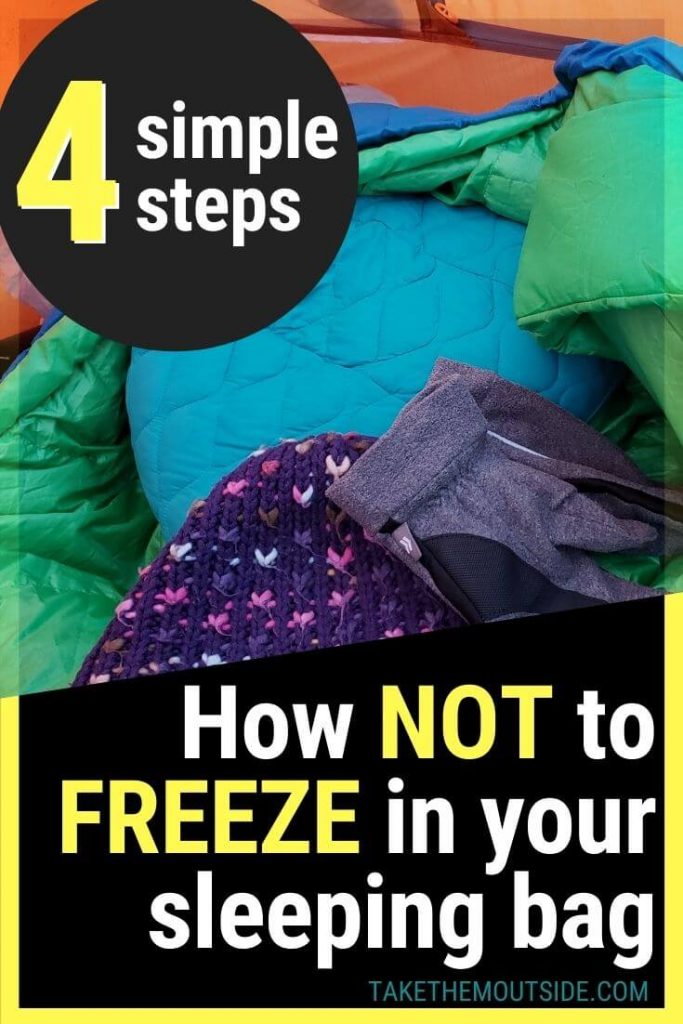
(This post contains affiliate links for your convenience. As an Amazon Associate I earn from qualifying purchases. If you make a purchase through my link I receive a small commission at no added cost to you. See my policy page for more information)
1. Choose the best sleeping bag size for your body size
The best sleeping bag is one that fits you and is appropriately insulated for your conditions.
Sleeping bag shapes:
A sleeping bag's success depends on containing the heat from your body in the air between you and your bag. A larger fitting bag means your body needs to heat more air. So, ideally, to be warm in your sleeping bag, you need to find one that fits you without much excess space.
The roomiest bags are rectangular shaped and are suited for summer and warm climate use. The barrel and mummy shaped sleeping bags have less wasted empty space and will keep you warmer.
Note: Because they are narrower some campers also find them uncomfortably restricting. You might actually want to go to a store and crawl into these to see how you like them.
Sleeping bags also come in varying lengths. Again, you want one without much extra space after your toes.
Tip for kids: If kids are using a sleeping bag that is much too long for them you can tie off the bottom excess space or fold it back under their legs.
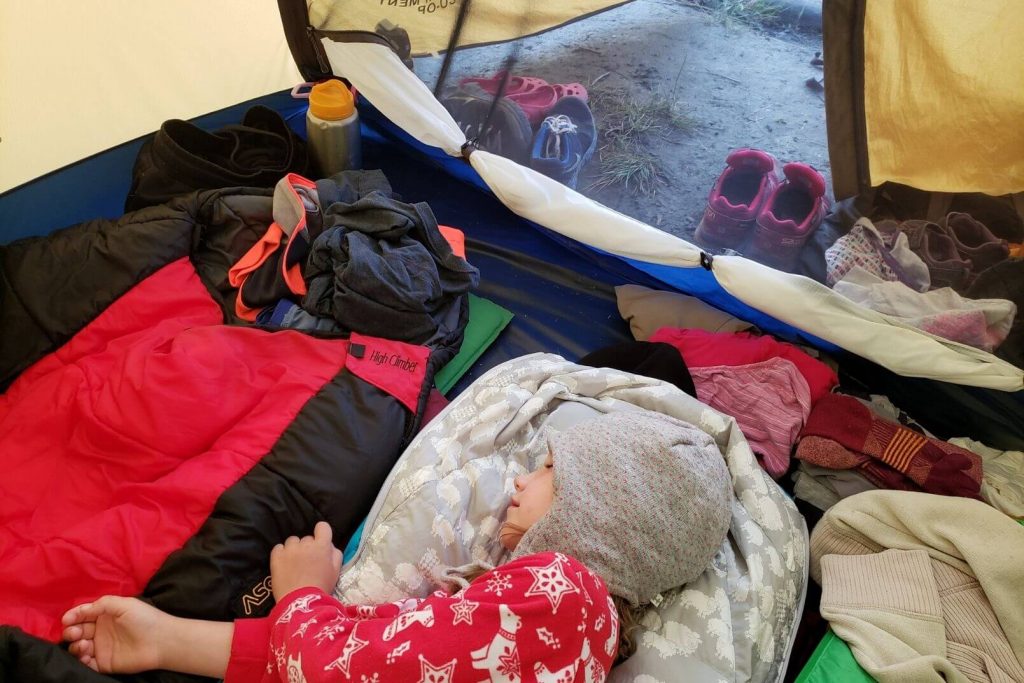
Double sleeping bags: These bags are made for two people to snuggle up inside. Now you'll have the heat of two bodies to warm the excess space. Or, if you're lucky and your sleeping partner wants to snuggle, you might even be able to zip two singles together – if the zippers match.
I'll admit that doubling up is my preferred way to stay warmest!
Hoods and yokes:
If you want to be warm in your sleeping bag, make sure it has a hood. Even if you're not going to tighten it all up around your head, the hood will still hold some heat in around your ears and neck.
In fact, I don't think I've even seen the option of purchasing a mummy or barrel sleeping bag that didn't have a hood… but, just mentioning it just in case.
However, the yoke (also known as a draft collar) is not found on all sleeping bags. And this piece of fabric can be so helpful for keeping drafts out and heat in your bag. What you'll be looking for is a bag that has a contoured flap which folds in at your neck. So, if you were to tighten the hood around your neck, this yolk sits against your neck/chest/shoulders to keep you warmer.
Even if you aren't tightening the hood the yolk can still be a help in staying warm.
2. How warm is your sleeping bag's warmth ratings?
All quality sleeping bags are given a warmth rating. This rating is based on the assumption that the sleeper is wearing long underwear and is sleeping on an insulating sleep pad, not the bare ground.
Everyone sleeps at different temperatures as well… metabolism, hunger, exhaustion, health… these will also effect a sleeper's night temperatures.
So, keep in mind your own's body's tendencies when considering the ratings.
It is best to choose a sleeping bag that is rated colder than the coldest temperatures you'll be sleeping in. You can always unzip your bag if you're feeling too warm.
If you plan to sleep in temperatures close to freezing, choose a temperature rated for below freezing. My bag is rated for -9 degrees Celsius (15 degrees Fahrenheit), yet the lowest night time lows are usually around 0 Celsius (32 Fahrenheit). I even considered purchasing the -15 degree Celsius (5 Fahrenheit) bag, but they didn't have it in my size.
3. Use a good quality sleep pad
Yes, a good quality sleeping bag might keep you warm, but sleeping on a good quality sleep pad under your warm sleeping bag will keep your warmest.
Sleeping bag manufacturers expect that you'll be using an insulating layer between you and the ground. So, don't overlook the quality of your pad. In fact, some manufacturers are now making sleeping bag/sleep pad combos where the two connect together or the sleeping bag itself doesn't have insulation on the bottom giving all that power to the sleep pad itself.
Just like sleeping bags, sleep pads will have insulation ratings, known as their R-value. The higher the number, the better it will insulate you from the cold ground.
Many generic sleeping pads have an R-value of about 1 or 2. If you want to be warm at night when sleeping in temperatures close to freezing, choose a sleep pad with an R-value of 4 or higher.
Interesting tidbit: a thick wool blanket or standard cardboard's R-value is around 3-4. So, if you can, putting one of these down under your sleeping set up could help you feel even warmer. Read more great tips for staying warm in your tent here.
Other sleeping pad considerations (which you can read more on here) are weight, packing size, inflation, and size.
It should also be mentioned here that your standard 'we have company, pump up the air mattress' type mattress doesn't tend to have a very high R-value. Putting a sleep pad or wool blanket under or on top of this will help.
4. What should you wear in a sleeping bag?
You should wear snug-fitting, wicking long underwear (or base layers). No, you should not wear your birthday suit.
I know there are those trail veterans that will tell you the best way to stay warm is to wear nothing… I just can't find much in the way of expert advise that will confirm this. But hey, if you want to try, go right ahead!
Yes, if all your clothes are wet, then don't wear them. But, assuming your clothes are dry, you should choose a light layer from neck to ankle and warm socks.
In very cold temperatures, you might even want to wear a toque (beanie) on your head and light-weight mittens or gloves.
The trick to which clothes to wear is to choose something in which you won't sweat or if you do sweat, the material will pull that moisture away from your skin and hopefully out into the sleeping bag where it will evaporate.
Which brings us to an important note,
Proper tent ventilation: while this isn't directly related to staying warm in your sleeping bag, it is very important. Your tent must have a bit of air flow to insure the condensation from your breath and damp clothing does not cause your sleeping bag to get damp. More on keeping the inside of your tend dry and ventilated in this article.
Nor should you pull the sleeping bag up and over your face as you breath's condensation will also get the inside of your sleeping bag wet.
What do we wear when camping in a tent? When camping in temperatures close to freezing I will wear long fleece leggings, a long-sleeved merino wool base layer shirt, merino wool socks, a toque, and light gloves. My husband tends to wear boxer shorts or long underwear, woolen socks, a merino wool long-sleeved shirt, and a toque.
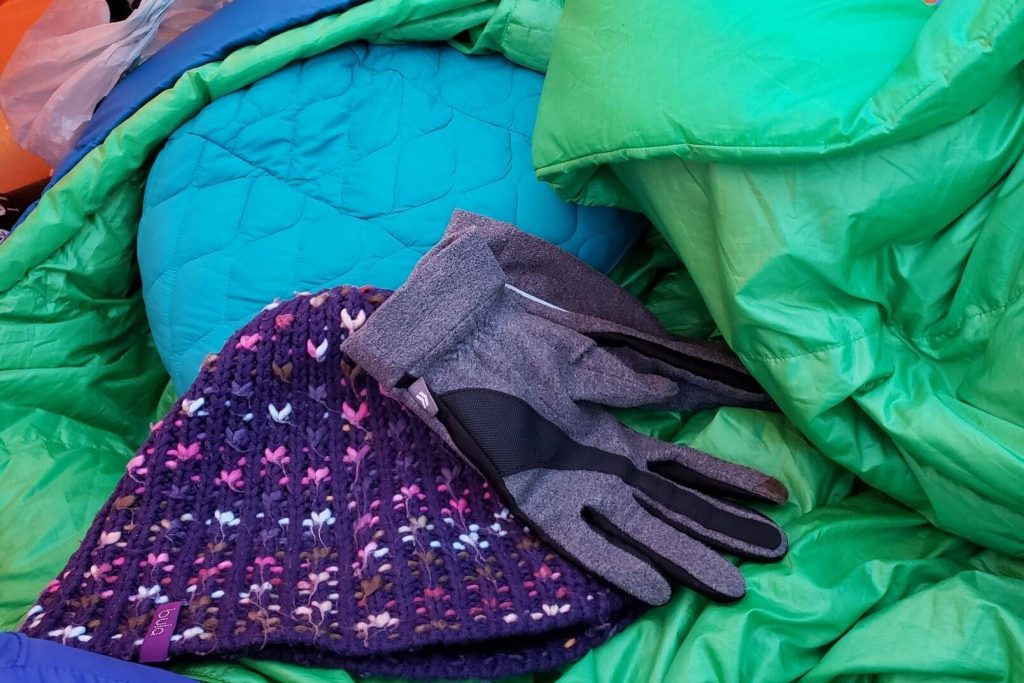
Frequently asked questions and tips from the trail:
Can a sleeping bag be too warm?
Yes. If you're sleeping in a warm climate you probably don't want a sleeping bag rated for below freezing. Being too warm can cause you to sweat, making the sleeping bag damp. A damp sleeping bag is uncomfortable. And, in the case of camping in a cool climate, a damp down sleeping bag will loose some of it's ability to keep you insulated.
How do I increase the heat of my sleeping bag?
Remember, being warm in your sleeping bag is a 3 part system… a quality, properly fitting bag, on a insulating pad, with appropriate clothing. All these elements work together.
As I mentioned above, using a high R-Value sleeping pad under your sleeping bag will be a huge help in keeping you warmer. So, if you want to be warmer consider a higher R-value pad.
You might also want to consider your tent and make sure to choose a tent suitable to your camping needs. Using a smaller 3-season tent means there is less air between your sleeping bag and the tent walls to heat.
Also, make sure you are keeping your sleeping bag in good condition. If it is synthetic and quite old, is the insulation overly compressed? Are you storing it loosely or all compressed? Has it had a proper washing lately?
Here are more tips on the proper care of quality sleeping bags.
Oh, and don't forget the snuggle tip. If you can share body heat with someone else that will help a lot.
Do sleeping bag liners keep you warmer?
Perhaps some? But not lots. A liner might add a bit of warmth as it is one more layer that air can warm between you and your clothes. However, if you are like me, you might find that some fabrics of sleeping bags 'feel' cold and in this case, I preferred using a liner because I didn't have the feel of that 'cool' fabric against my skin. And this sensation of being warmer helped a lot.
I have also liked my liner for times when my sleeping bag was too hot, but I didn't want to be fully uncovered.
Tips from the trail: if you move a lot when you sleep, sleeping bag liners can get twisted and bunched up and be rather uncomfortable or constricting.
Mostly, sleeping bag liners are used to help keep sleeping bags cleaner as it is easier to wash the liner than the bag itself.
Is it warmer in a sleeping bag with less clothes on?
Yes, to an extent. Do not overdress or layer your sleeping clothes. You do not want to cause yourself to sweat. Instead, choose warm, wicking long underwear (base layers) to wear in your sleeping bag.
Why are you always cold in your sleeping bag?
Perhaps your sleeping bag just isn't warm enough for you in your climate. Or, if it is rated cold enough, perhaps it's just too old and has lost the loftiness to the insulation. Or, perhaps your sleep pad isn't insulating enough. Or, perhaps you sweat at night and get damp… all these can affect your temperatures. Make sure your entire sleep system is all working properly together.
Also, trying to not allow yourself to to get too cold before getting into your bag will help. Once that chill has set it, it can be hard to feel warm again.
How to keep feet warm in a sleeping bag?
This is perhaps the most asked question… and for many of us, the most common problem.
Again, making sure all elements are addressed: the sleeping bag's size, warmth rating, your sleep pad, your socks… But, if you still need some tips, here are a few:
Tips from the trail for keeping your feet warm at night:
Use a hot water bottle in your sleeping bag: Yes, putting water into your bag is a bit of a gamble. Chances are that hot Nalgene will stay sealed all night long… but, if it chose that night to break or leak, yikes! However, if you're willing to take the risk, this really is the number one solution.
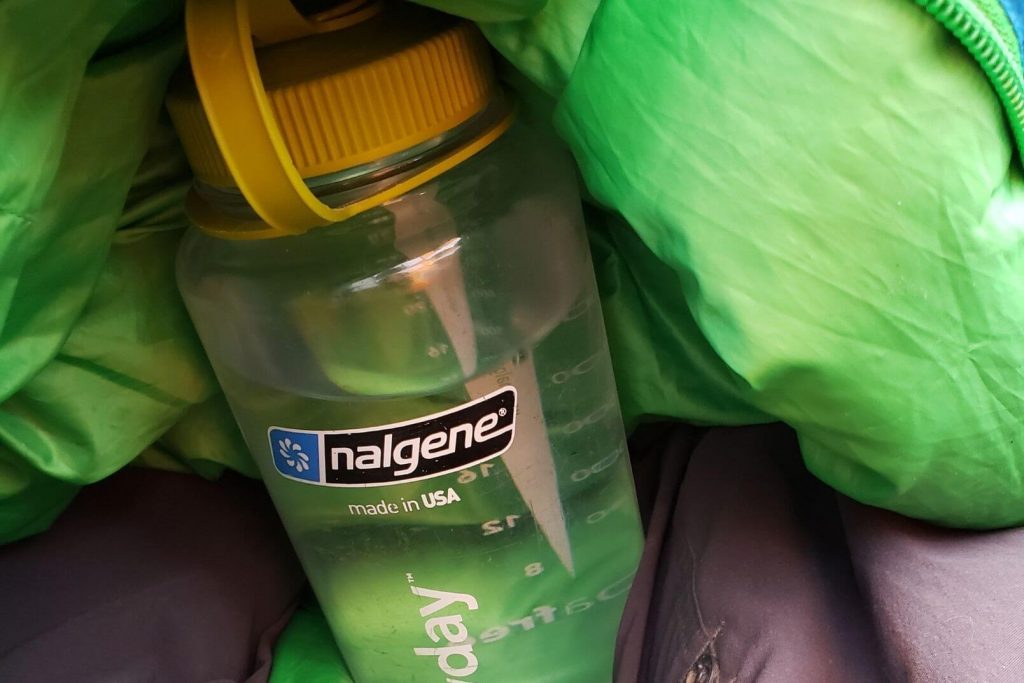
We boil water before bed, pour it into our Nalgene, tuck it into the bottom of our sleeping bags and it stays warm for almost the entire night. Then, in the morning, we already have boiled water for drinking.
I have also heard of people using heated rocks. I have not tried this myself as I've also heard of people burning holes in their sleeping bags doing this!
Hot hands: This one is a bit less risky, and definitely helps take the chill out of your toes. Just tuck one or two hot hands into the bottom of your sleeping bag. You might want to put them in an old sock first incase the baggie were to accidentally tear – that would be a horrible mess.
I have worn double socks with the hothands between the first and second pair on nights my toes just wouldn't warm up.
Tomorrow's clothes: If the clothes you plan to wear tomorrow are dry and clean, you can throw those into the bottom of your sleeping bag and tuck your feet into them. I like to do this because it ensures that the clothes I put on in the morning are nearby and warm.
Empty sacks and jackets: You can use your empty stuff sacks, backpacks, jackets, and other random items under the feet of your sleeping bag as added insulation against the cold. You could also throw them on top of your sleeping bag, but they'll likely fall off in the night as you move around.
And lastly, if you can, blankets!
If you don't have to worry about weight or space then one of the easiest things to do to stay warmer in your sleeping bag is to just bring more blankets! Put a nice thick wool blanket on the floor of the tent under your sleep pad, bring a duvet (or two) to throw over your sleeping bag and that should do the trick!
Other camping posts you'll want to read next:
- How to actually sleep comfortably in a tent
- Keeping your hiking and camping gear clean and in top shape
- How to get you and your kids ready for backcountry camping
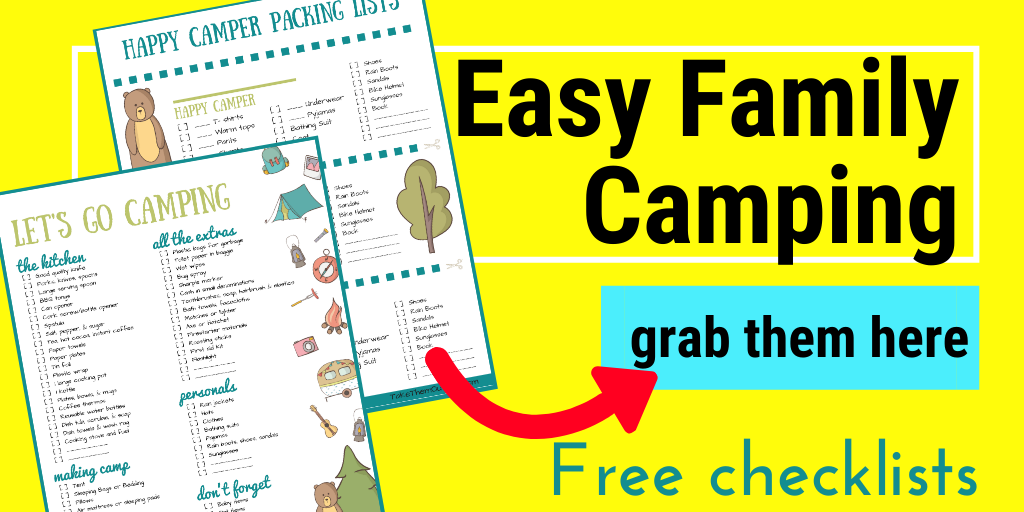
Source: https://www.takethemoutside.com/how-to-stay-warm-in-a-sleeping-bag/
0 Response to "Easy 3 Steps That Dont Mess the Skin to Get Rid of Sleeping Bags"
Post a Comment